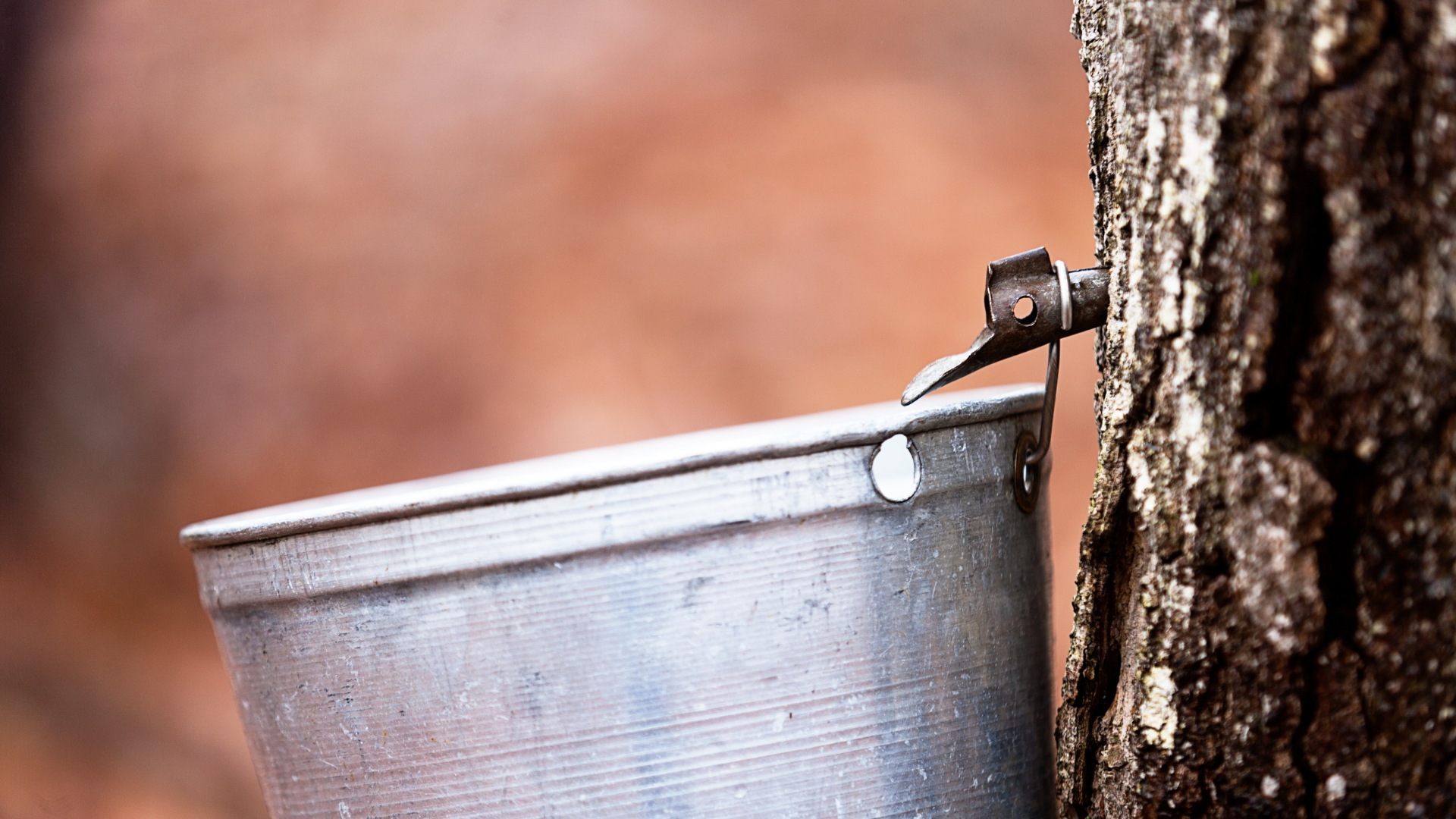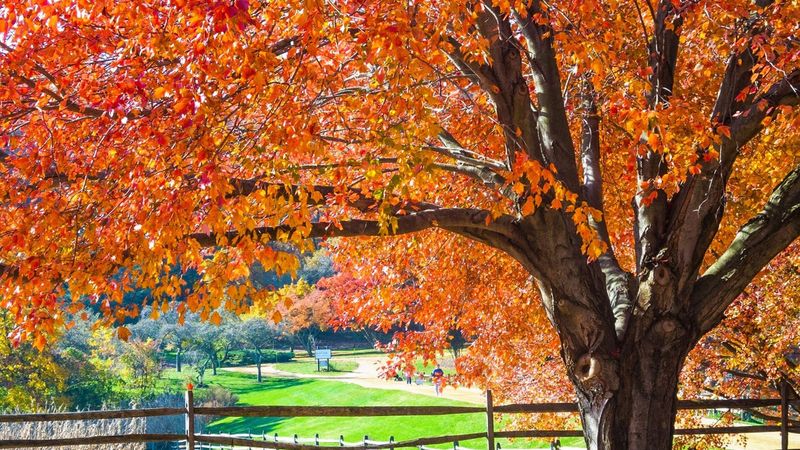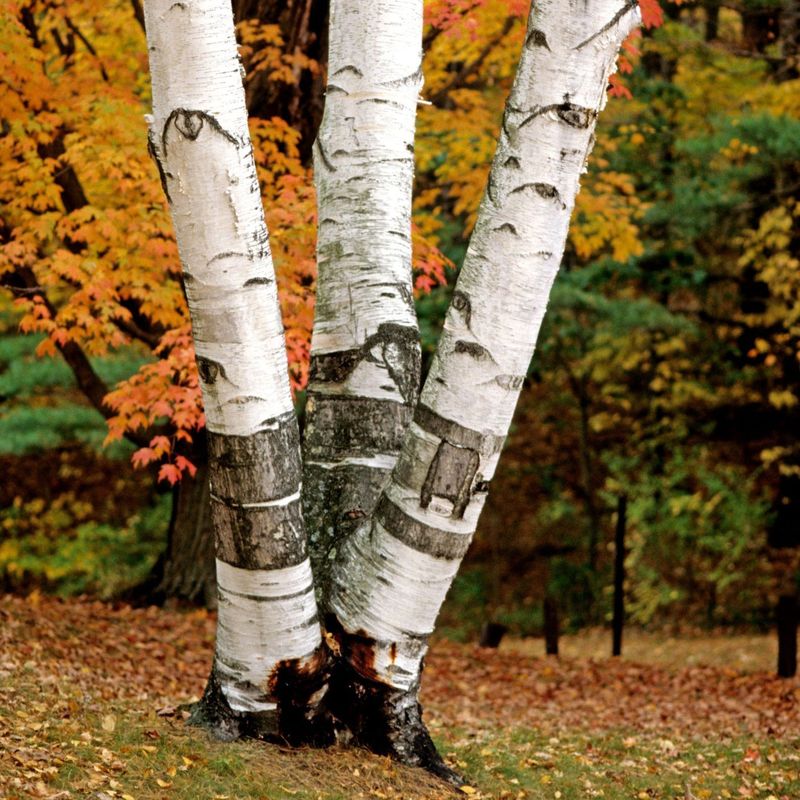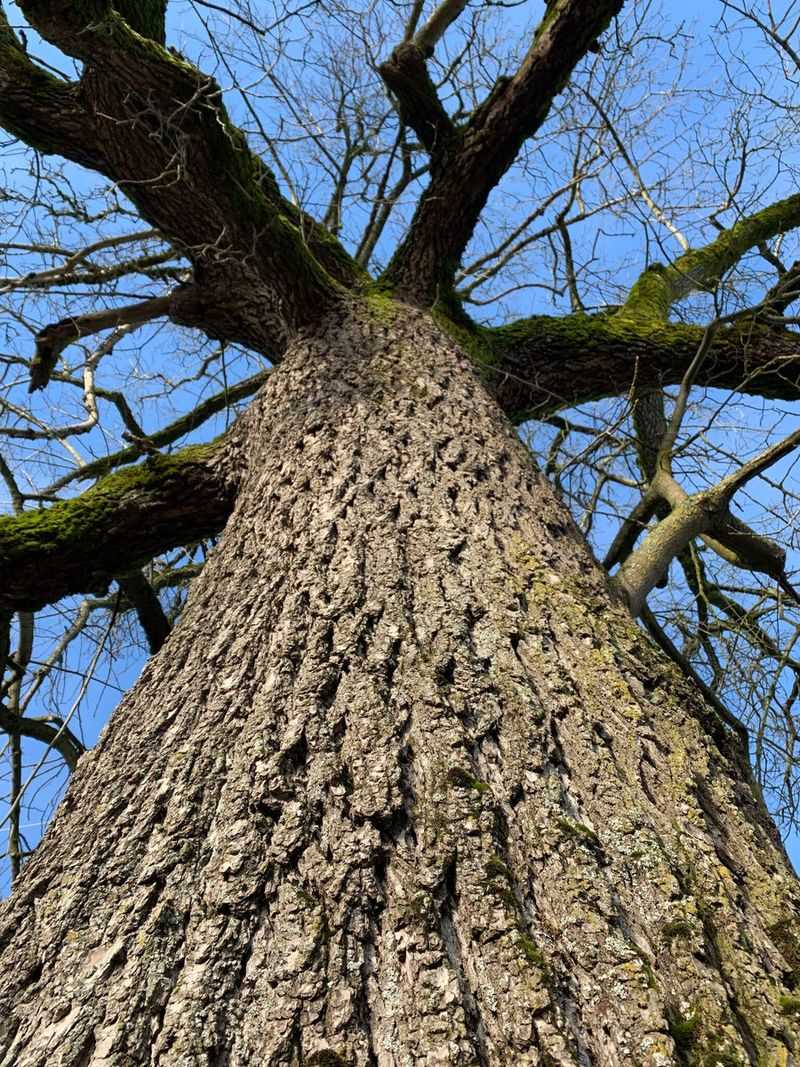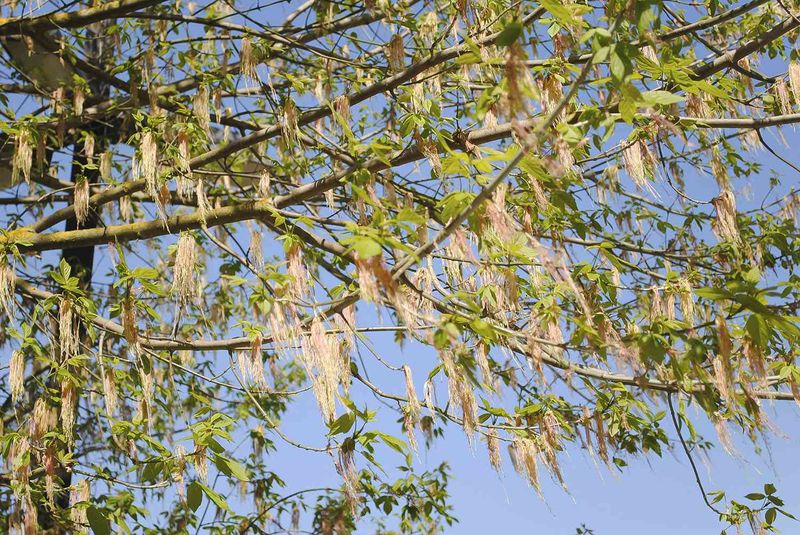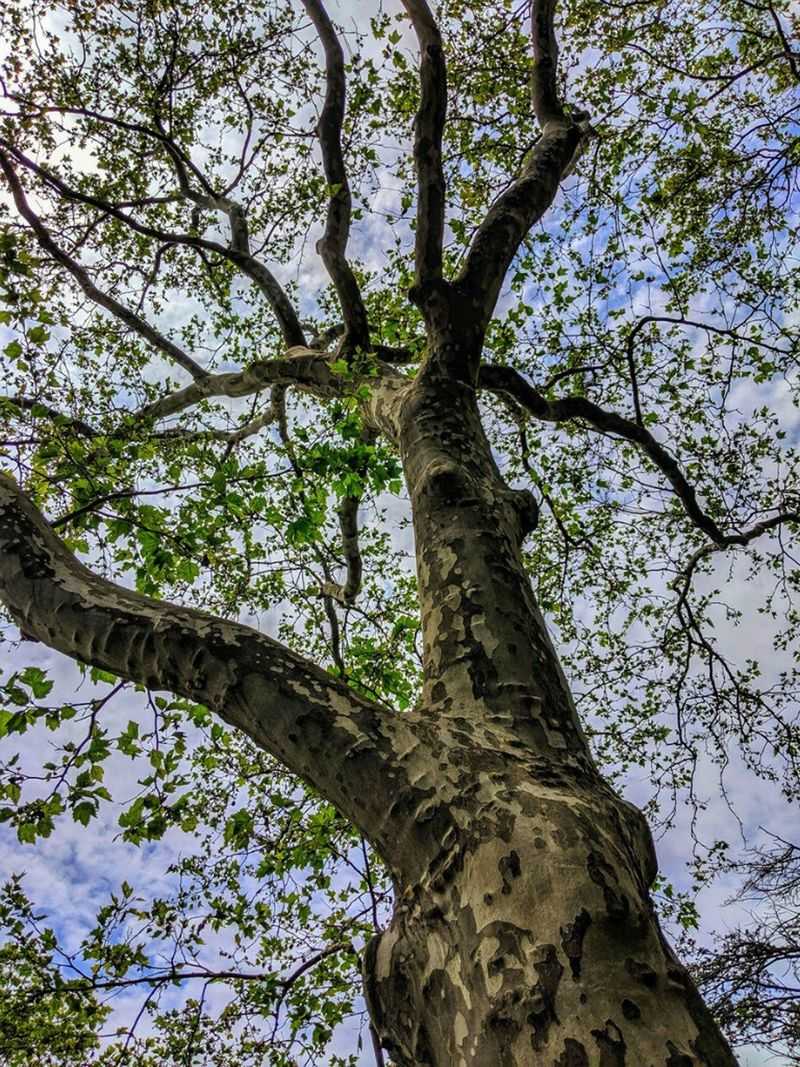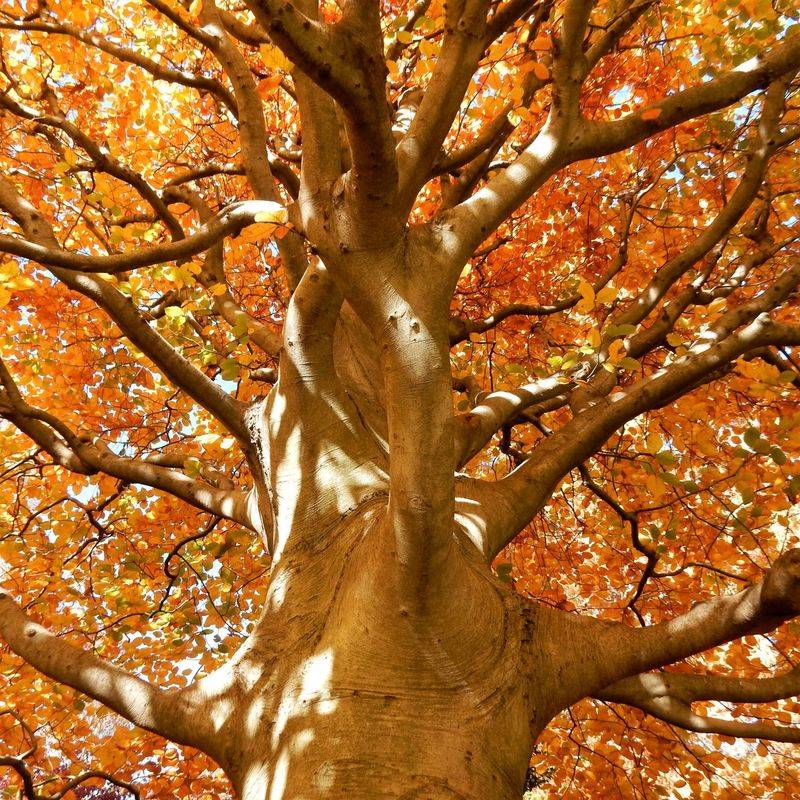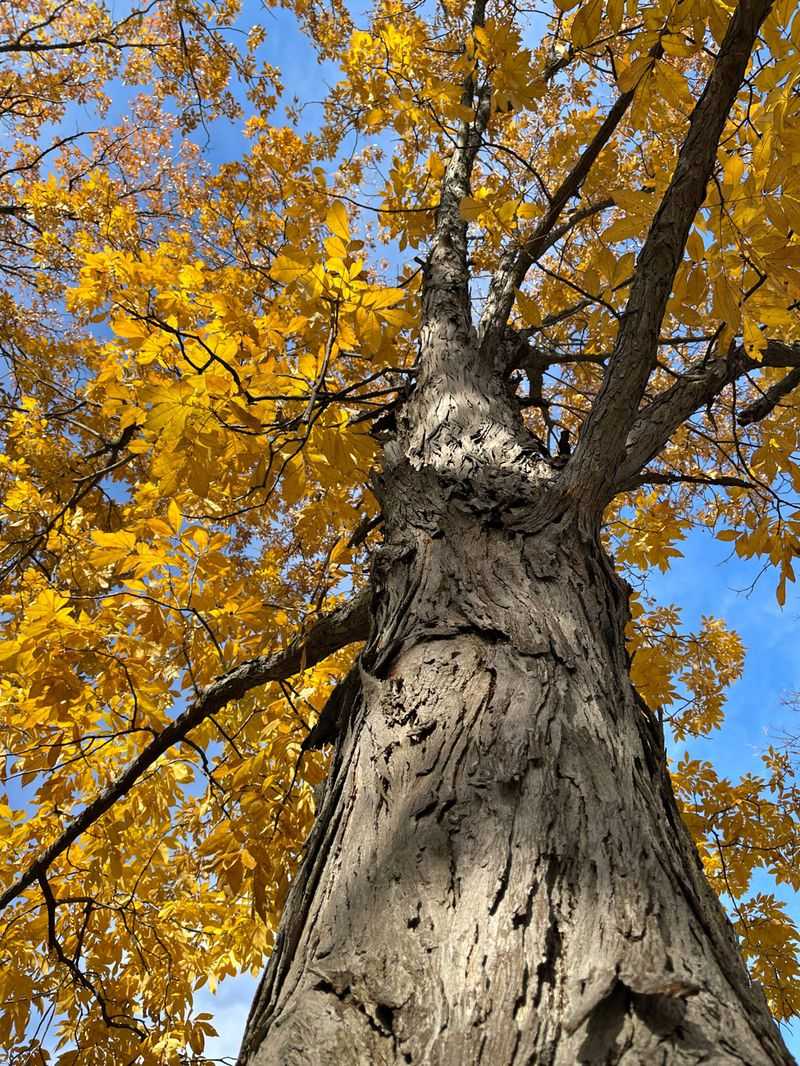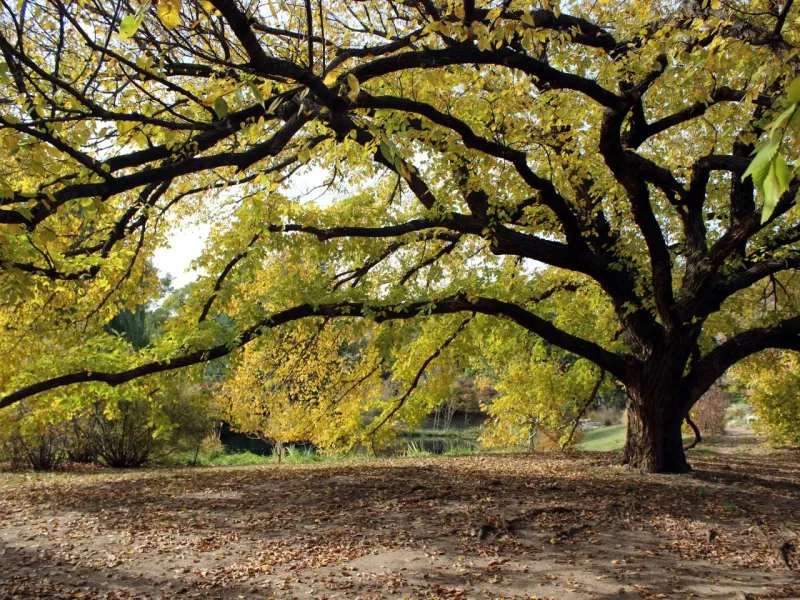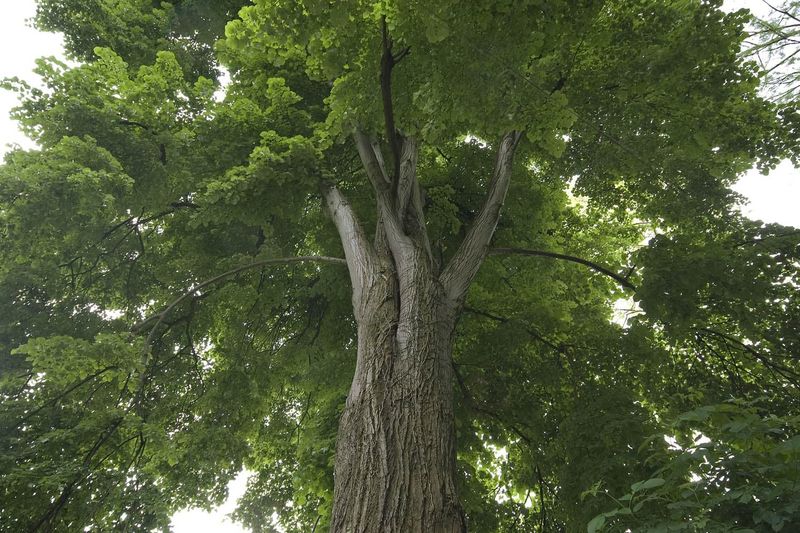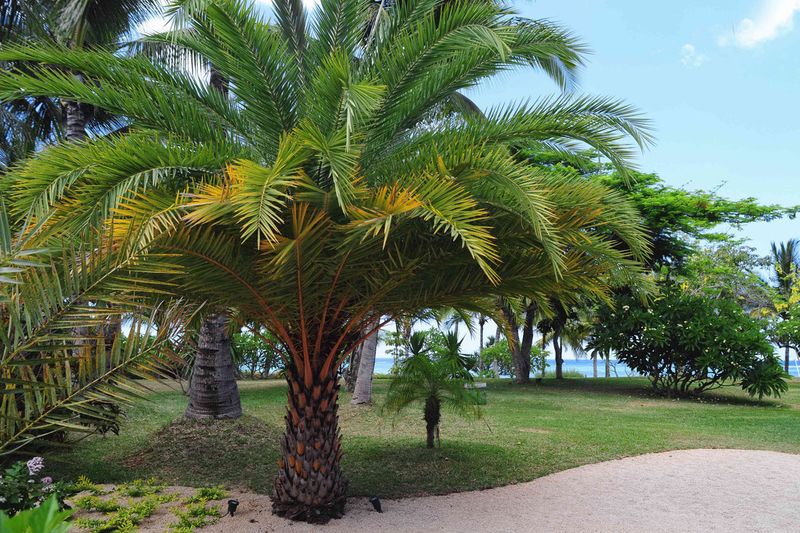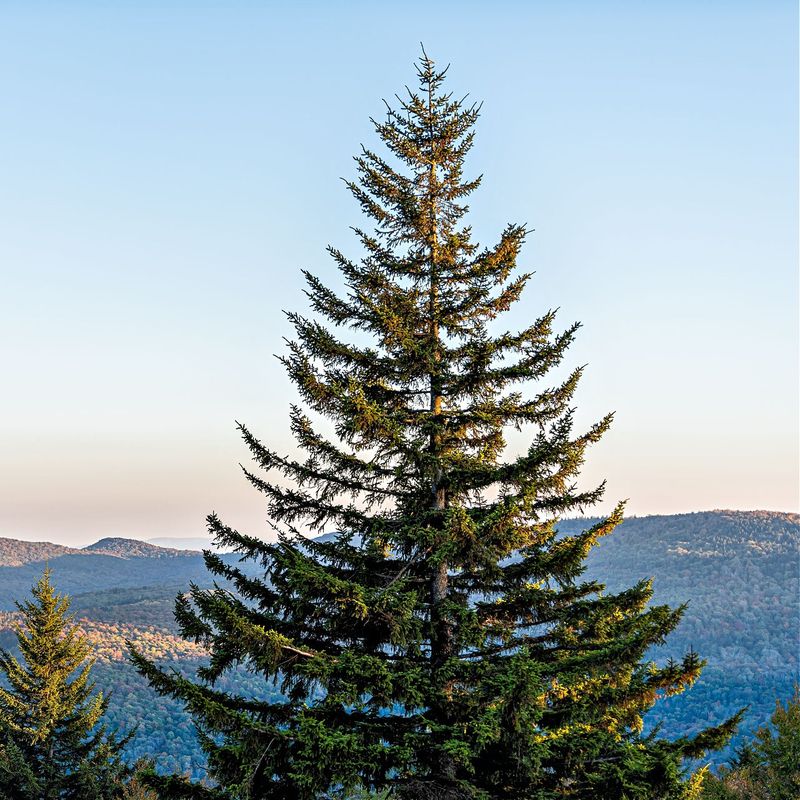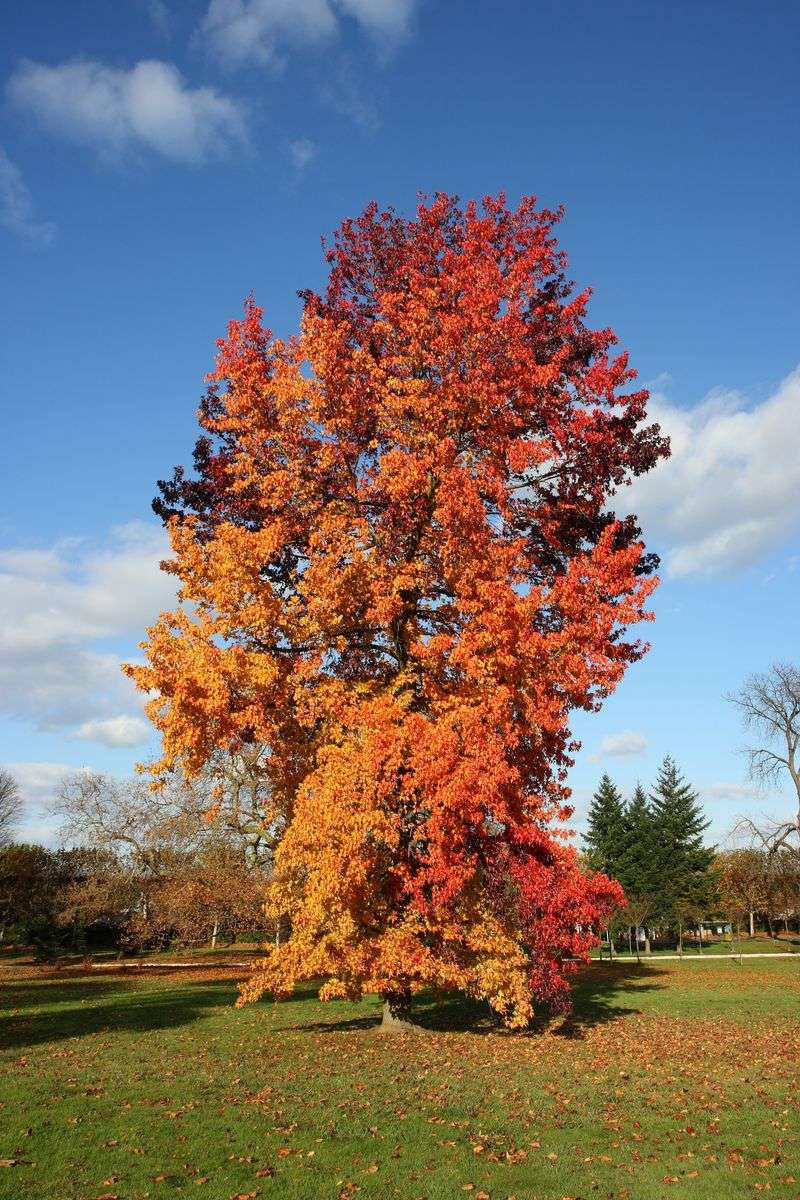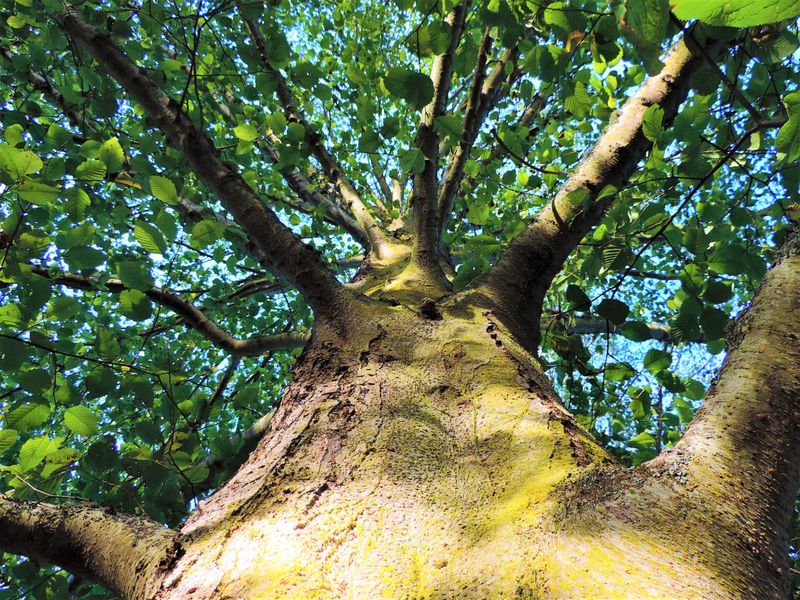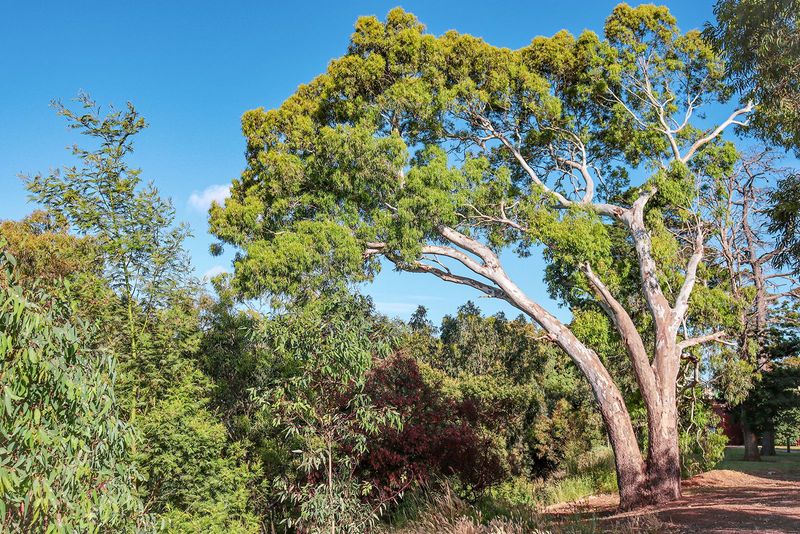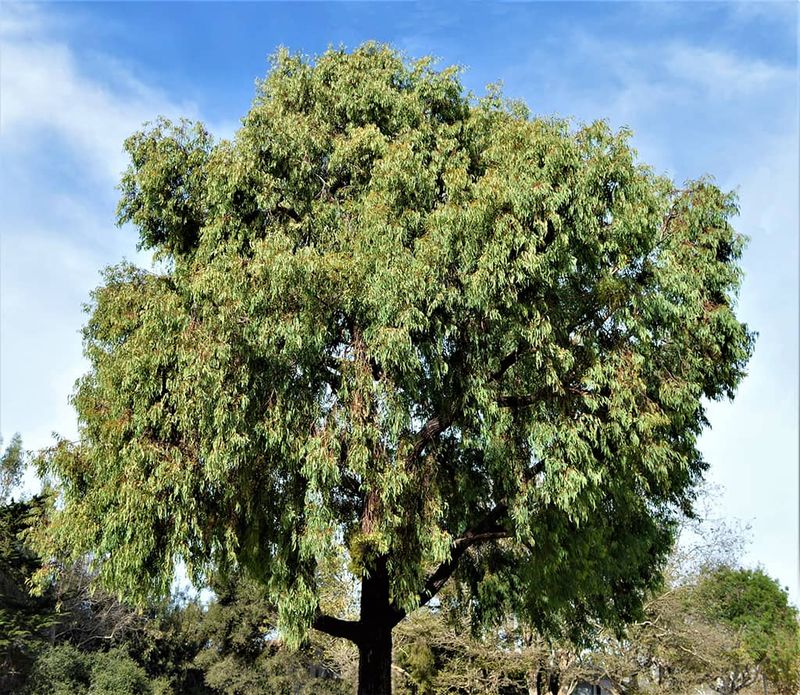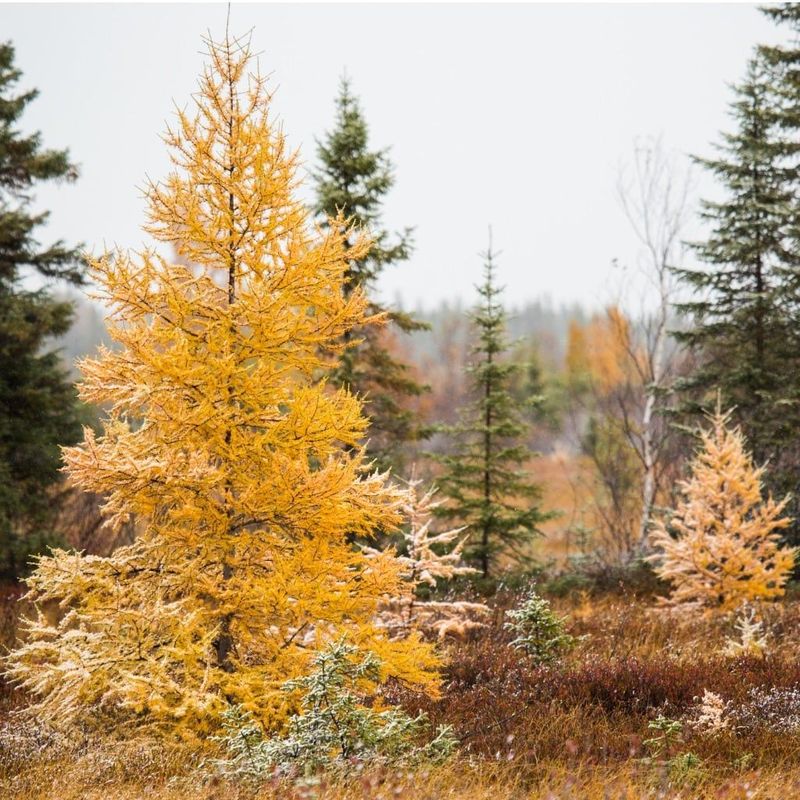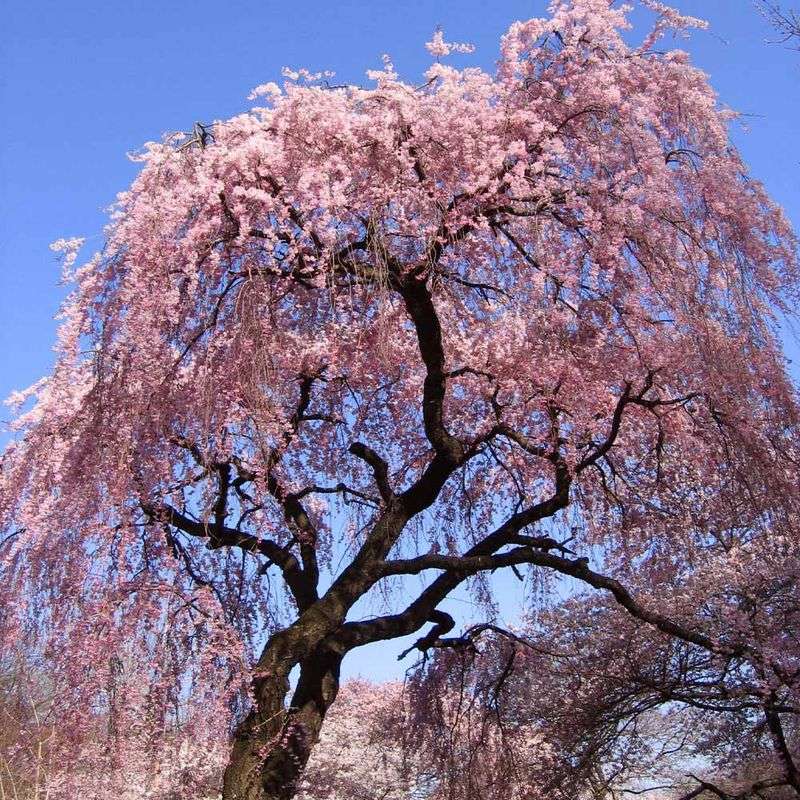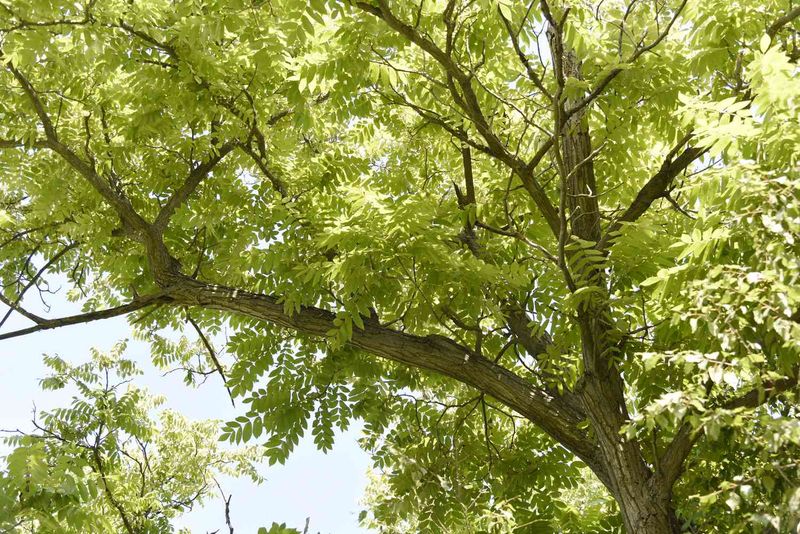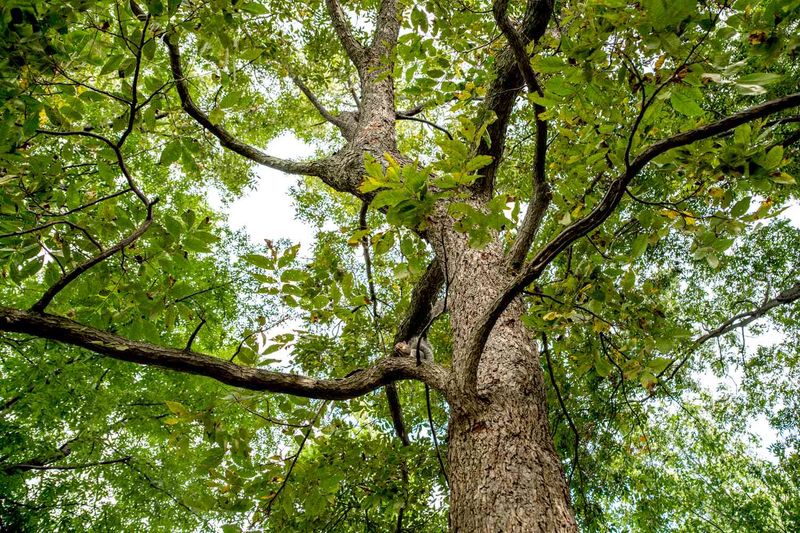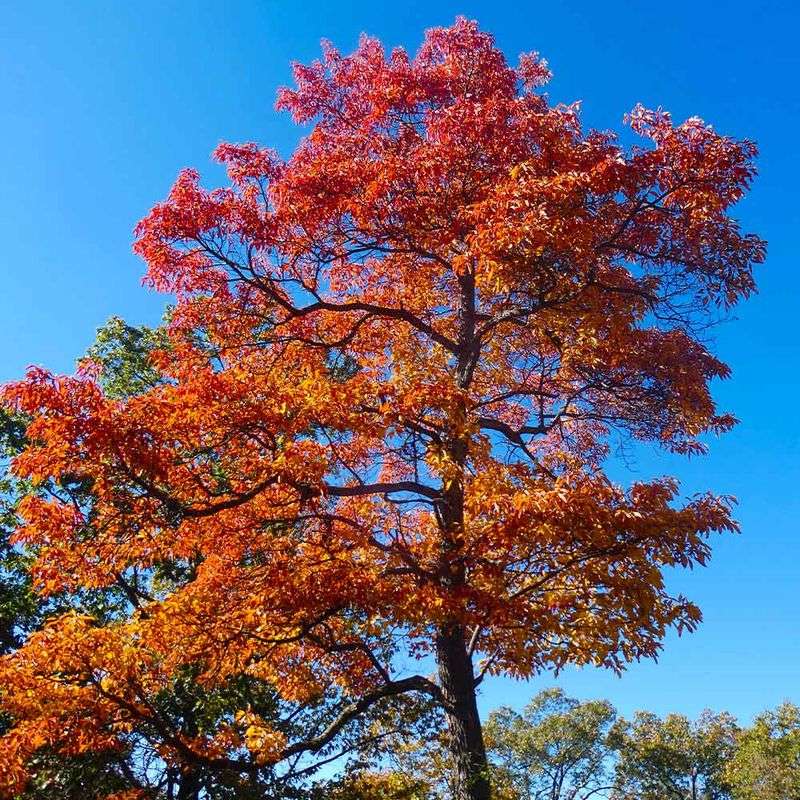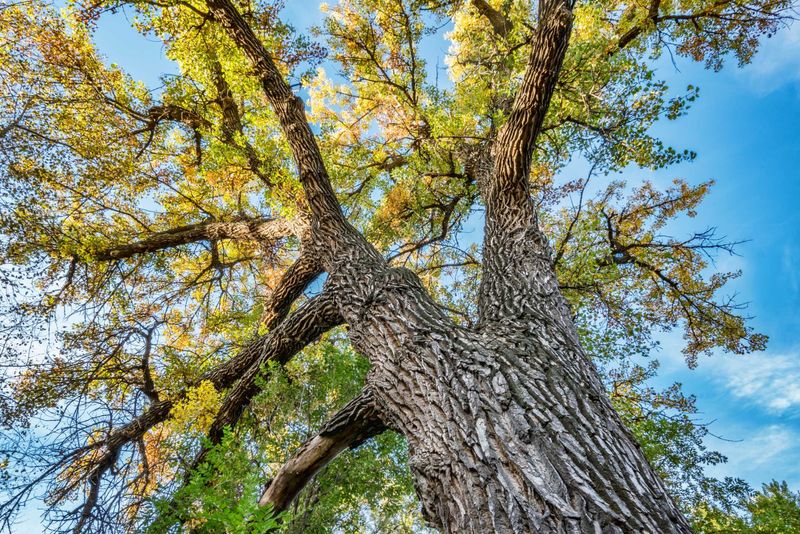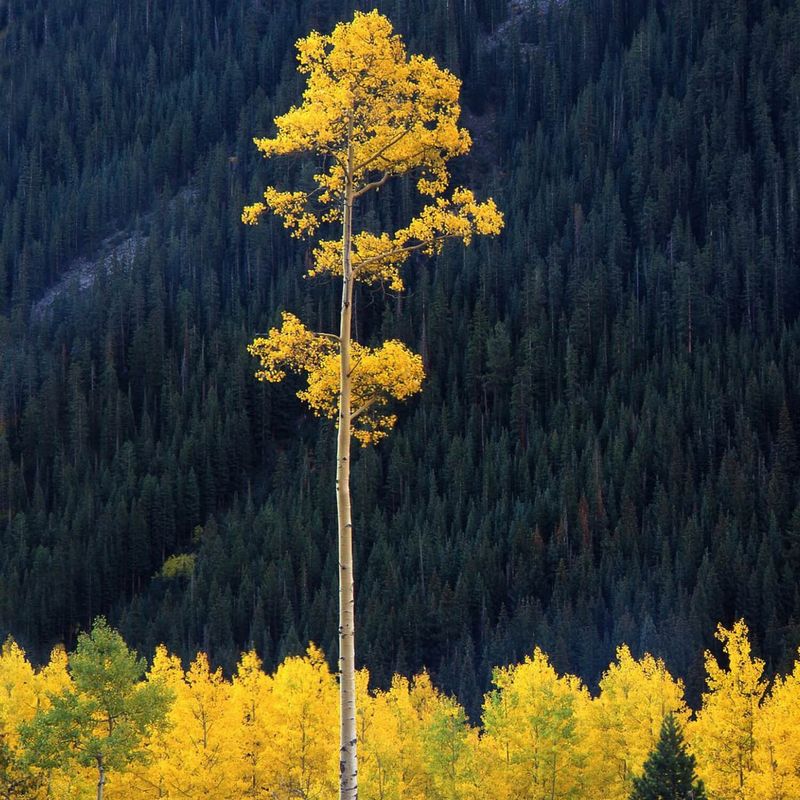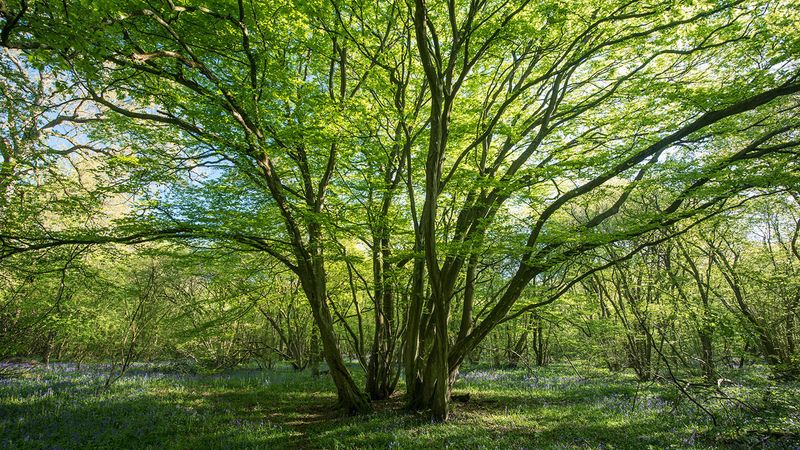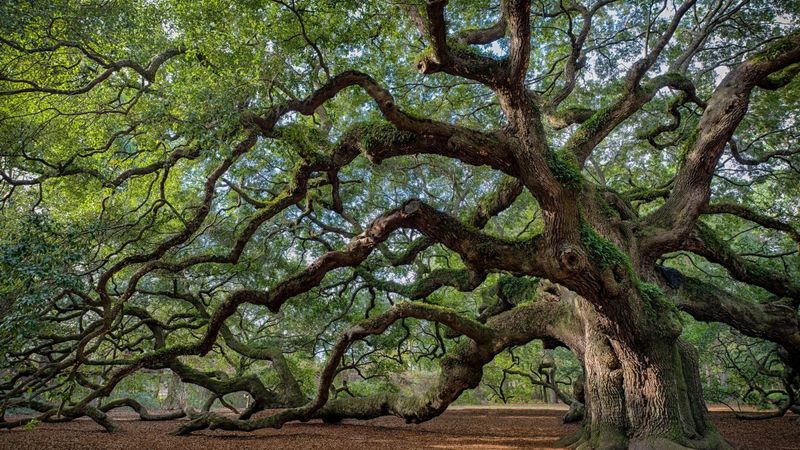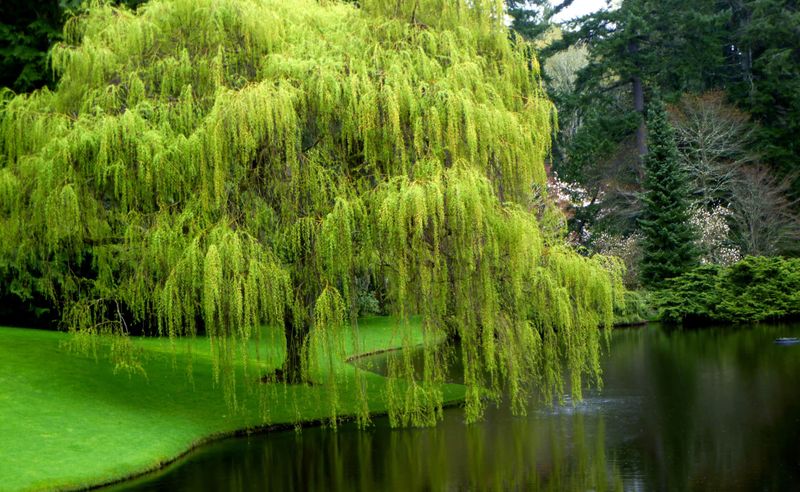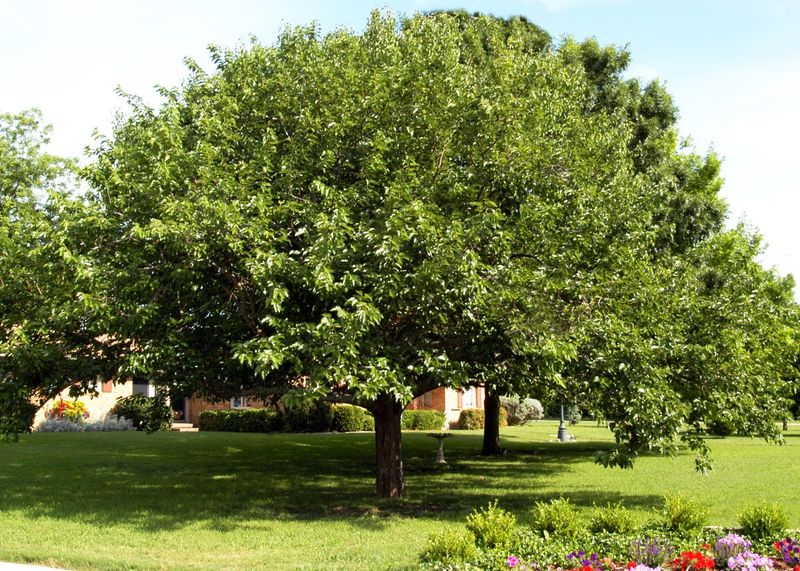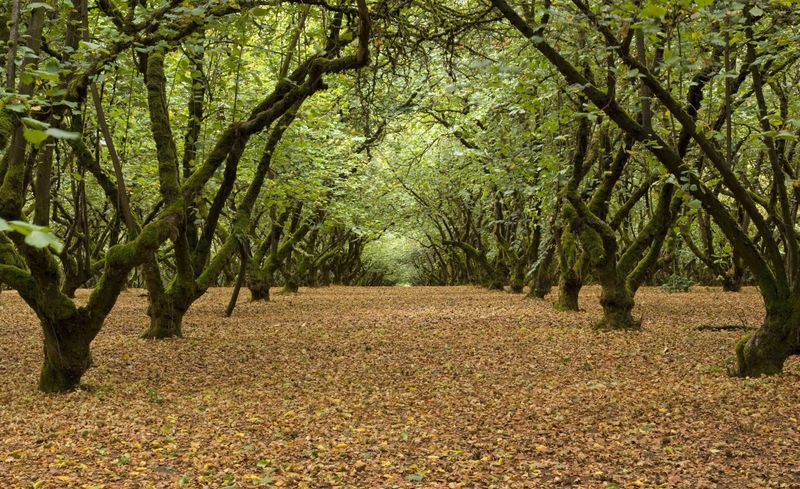I remember the first time I tapped a birch tree. It was like uncovering a hidden treasure. The sap was oh-so-delicious! It felt like I was part of some ancient ritual, one where each tree tells its own story.
From walnuts to black cherries, every tree offers something unique. Sure, the squirrels thought I was crazy, but I was too busy living my syrup-making dream to care.
Join me on this sweet, sticky journey, where the forests reveal more than you expect and every tap feels like a new adventure.
1. Maple Tree
Ah, the iconic herald of syrup! This tree’s sap transforms into the syrup we all love on pancakes. Maple trees, particularly the sugar maple, are celebrated for their sap rich in sugars.
In early spring, the sap begins to flow, marking the start of syrup season. While most people think of Vermont or Canada for maple syrup, these trees grow widely across North America.
Plus, they’re easy to tap, making them a favorite for both amateurs and seasoned syrup enthusiasts. Maple syrup isn’t just a topping; it’s a tradition.
2. Birch Tree
Picture a tree with paper-like bark peeling in thin layers. The birch tree’s sap, slightly less sweet than maple, is prized for its unique taste.
Tapping birch trees occurs later in the spring, as their sap flow follows maple’s. Birch syrup has a caramel-like flavor, offering a gourmet alternative to the usual maple.
It’s particularly popular in Alaska and northern Europe. This tree might not turn your pancakes golden, but it offers an adventurous twist for the culinary explorer.
3. Walnut Tree
Standing tall with its broad canopy, the walnut tree is a dark horse in the syrup world. Its sap is less known but yields a delicious syrup with a hint of nuttiness.
Walnut sap flows abundantly in early spring, much like its maple counterpart. While not as commercially popular, those who tap walnut trees praise its unique flavor.
The syrup is often used in baking or as a subtle complement to savory dishes. It’s a tree that promises surprise and delight.
4. Boxelder Tree
Often disregarded as a weedy nuisance, the boxelder tree is part of the maple family but lacks the grace of its cousins. However, its sap can indeed be tapped for syrup!
The boxelder’s syrup is much lighter in flavor compared to sugar maples, but it still offers a sweet touch to various dishes.
Found in suburban areas, it’s accessible for urban syrup makers. This tree proves that beauty isn’t a prerequisite for producing something sweet.
5. Sycamore Tree
I’ll never forget the first time I tapped a sycamore tree. At first glance, it seemed just like any other tree, with its peeling bark.
But when I tapped it, I discovered its sap had a mild, subtle sweetness. It was a pleasant surprise, and I realized how even the most ordinary trees can hold hidden treasures.
Now, every time I pass a sycamore, I smile, knowing the delightful syrup it offers. It’s a reminder that nature’s secrets are often right under our noses.
6. Beech Tree
Imagine a tree with smooth gray bark and vast spreading branches. The beech tree’s sap is another under-the-radar choice for syrup. It’s not the sweetest option, but it offers a distinctly subtle flavor.
Beech trees are common in deciduous forests across the northern hemisphere. Tapping them requires patience and skill, making the resulting syrup a real treat for those who succeed.
It’s a pursuit of passion and patience, rewarding the adventurous with a taste of nature’s bounty.
7. Hickory Tree
Often overshadowed by its nut-bearing fame, the hickory tree also offers sap that can be transformed into syrup. This tree’s bark is rugged, hinting at its hardy nature.
Hickory syrup isn’t derived directly from sap like most others; instead, it’s made from an infusion of bark. Known for its smoky flavor, it’s a perfect match for barbecue sauces or savory dishes.
Hickory enthusiasts cherish its bold taste, adding a twist of adventure to their culinary creations.
8. Elm Tree
The towering elm, with its elegant canopy, offers more than just shade on a hot day. Its sap can be tapped for syrup, though it remains a rare practice.
Elm syrup is mild and less sweet, appealing to those who enjoy subtlety. Elms are commonly found in city landscapes, making them a convenient choice for urban tappers.
While not your typical syrup source, the elm tree offers a delicate flavor profile that’s worth a try for the curious and the bold.
9. Linden Tree
This tree, known for its heart-shaped leaves and fragrant flowers, hides another secret — its sap can be tapped for syrup!
Linden trees yield a syrup that is subtly sweet with a hint of floral undertones. Ideal for those who enjoy experimenting with flavors, linden syrup can be used in teas or as a sweetener in desserts.
Commonly found in parks and as street trees, they offer an accessible option for city dwellers. It’s a sweet surprise from a familiar friend.
10. Palm Tree
You might not associate palm trees with syrup, but in tropical regions, palm sap is a culinary staple. Known as toddy or palm wine, it can be boiled down into a syrup that’s both sweet and tangy.
Palm sap tapping is an age-old tradition in places like Southeast Asia and Africa. The syrup it produces is often used in local dishes and beverages.
For those lucky enough to be near palms, it’s a taste of tropical sunshine in syrup form. Palm trees offer a break from the ordinary.
11. Pine Tree
I’ll never forget the first time I tried tapping a pine tree. With its towering height and evergreen needles, it seemed like an unlikely candidate for syrup.
But once I collected the sap and boiled it down, I was amazed by the resin-rich flavor. Pine syrup isn’t as sweet as maple, but it has a unique, bold taste that adds depth to dishes.
It’s perfect for adventurous cooks who want to try something new. Every time I use it, I feel like I’m capturing a little taste of the wild, bottled up and ready for culinary creativity.
12. Sweetgum Tree
Admired for its star-shaped leaves and spiky seed pods, the sweetgum tree also offers sap for syrup. This syrup isn’t your typical breakfast companion; instead, it serves as a gourmet ingredient.
Sweetgum syrup has a mild, sweet flavor, often used to add depth to sauces and glazes. Common in the eastern United States, these trees provide a regional twist for syrup enthusiasts.
Tapping a sweetgum is a pursuit for the adventurous, offering a glimpse into the diverse world of tree syrups.
13. Alder Tree
Perched by riverbanks, the alder tree might not scream syrup, but its sap can indeed be tapped. Alder syrup is rare, offering a mildly sweet flavor that intrigues the palate.
These trees thrive in wet environments, often lining streams and rivers. The syrup from alder sap is typically used in gourmet cooking rather than as a pancake topping.
For those willing to explore the uncommon, alder trees provide a taste that defies expectations. It’s a culinary adventure waiting to happen.
14. Eucalyptus Tree
In the vast Australian landscapes, eucalyptus trees stand tall and aromatic. While not commonly tapped for syrup, their sap can be transformed into a unique sweetener.
Eucalyptus syrup carries a hint of menthol and citrus, a nod to its distinctive aroma. It’s used sparingly, often as a flavor enhancer in drinks or desserts.
This tree offers a novel syrup experience. It’s a taste of the outback, captured in a bottle.
15. Ironbark Tree
With its tough bark, the ironbark tree might seem impenetrable, yet it offers sap for those determined to tap it. Ironbark syrup is highly unusual, with a robust and earthy flavor profile.
Commonly found in Australia, these trees are part of the eucalyptus family. The sap is less about sweetness and more about depth, used to enhance savory dishes.
Tapping an ironbark is for the bold, offering a syrup that challenges the conventional. It’s an outback adventure in every drop.
16. Tamarack Tree
Among the conifers, the tamarack, or larch, is a deciduous oddity. Its sap can be tapped, offering a syrup with a distinctive flavor.
Tamaracks are found in northern forests, where they stand out with their needle-like leaves that change color. The syrup is not widely known but brings a touch of novelty to the table.
Tamarack syrup is a seasonal delight worth seeking. It’s a whisper of the northwoods, sweetened.
17. Cherry Tree
Springtime brings cherry blossoms, a sight to behold. Less known is the cherry tree’s ability to offer sap for syrup. Cherry syrup is mildly sweet with a hint of almond undertones.
Orchards across the temperate zones grow these trees, making them accessible for tapping. While cherries are the main attraction, the sap provides a secondary harvest that’s so surprising.
For those with a sweet tooth seeking novelty, cherry trees offer a dual-purpose bounty.
18. Butternut Tree
Amidst the walnut family, the butternut tree stands with its broad leaves and pale bark. Its sap can be tapped, offering a syrup with a distinct, buttery flavor.
Found in eastern North America, these trees are lesser-known syrup sources but provide a unique taste experience. Butternut syrup is often used in confections and adds richness to sauces.
Tapping a butternut tree is an endeavor for the curious, promising a taste that blends tradition with a twist of luxury.
19. Pecan Tree
Renowned for its nuts, the pecan tree also hides the potential for syrup. Tapping pecan trees yields a sap that transforms into a syrup with nutty undertones.
Pecan orchards in the southern United States offer these trees, making them a regional treasure for syrup enthusiasts. The syrup is often used in baking, adding depth to pecan pies and other sweets.
For those in the south, tapping a pecan tree is a delicious way to celebrate this beloved staple.
20. Sassafras Tree
Known for its aromatic roots, the sassafras tree also offers sap that can be tapped for syrup. This syrup carries a root beer-like flavor unique to sassafras.
Found in eastern North America, these trees are often sought for their leaves and roots, but the sap provides another culinary angle.
Sassafras syrup is a niche product, often used in homemade root beer or as a dessert topping. Tapping sassafras is a journey for the adventurous, promising flavors that evoke nostalgia.
21. Poplar Tree
With its tall, straight trunk, the poplar tree is a common sight in many landscapes. Its sap, though not traditionally used for syrup, can be tapped and transformed.
Poplar syrup is mild, with a delicate sweetness, offering a gentle alternative to more robust syrups. These trees are widespread, making them an accessible choice for those new to tapping.
While poplar might not be the first tree you think of for syrup, it offers a subtle flavor worth exploring.
22. Aspen Tree
Aspen trees, with their quivering leaves and bright bark, are a symbol of beauty in many regions. Their sap can also be tapped, providing a syrup with a gentle flavor.
Found in cooler climates, aspens are known for their striking appearance more than their syrup. Yet, the sap offers a mild sweetness that’s perfect for those who prefer understated flavors.
Tapping an aspen is a nod to nature’s quieter wonders, offering sweetness in simplicity.
23. Hornbeam Tree
Often overshadowed in the deciduous forest, the hornbeam tree offers sap that can be tapped for syrup. The resulting syrup is subtle, with a hint of nuttiness that intrigues the palate.
These trees thrive in mixed forests, providing an option for those seeking to explore less conventional syrup sources. Hornbeam syrup is rare, making it a treat for the curious and adventurous.
Tapping a hornbeam is a quiet journey, revealing the understated treasures of the forest.
24. Oak Tree
I never expected to tap an oak tree, but once I did, I was pleasantly surprised. Oak sap is definitely less common for syrup, but it has a hearty flavor that adds a unique depth to savory dishes.
The oak tree, known for its strength and endurance, doesn’t just give shade and acorns. It gives a syrup that’s perfect for culinary experiments.
The first time I used it in a sauce, it brought a surprising richness that made me feel like I had unlocked a hidden gem.
25. Willow Tree
The weeping willow, with its long, graceful branches, is more than just a picturesque sight. Its sap can be tapped, providing a syrup that’s both aromatic and intriguing.
Common near water bodies, willows offer a syrup with herbal notes, often used in teas and medicinal concoctions.
While not a mainstream syrup choice, tapping a willow tree is a journey into the world of alternative flavors. It offers a taste experience that’s both soothing and surprising.
26. Mulberry Tree
In the world of berries, the mulberry tree stands out. But did you know it also offers sap that can be tapped for syrup? Mulberry syrup is sweet with a hint of berry goodness.
These trees grow in temperate regions, providing a dual harvest of fruit and sap. The syrup is often used in desserts, adding a fruity twist to traditional recipes.
For those with a penchant for berries, mulberry trees offer a delightful surprise. It’s a two-for-one deal from nature!
27. Hazelnut Tree
Famed for its delicious nuts, the hazelnut tree also provides sap that can be tapped for syrup. Hazelnut syrup carries a sweet, nutty flavor that’s a treat for any palate.
Found in temperate zones, these trees offer more than just a nutty harvest. The syrup is often paired with coffee or used in confections, adding depth to culinary creations.
For those exploring the world of syrups, hazelnut trees offer a rich and rewarding experience. It’s nature’s dessert topping in liquid form.

